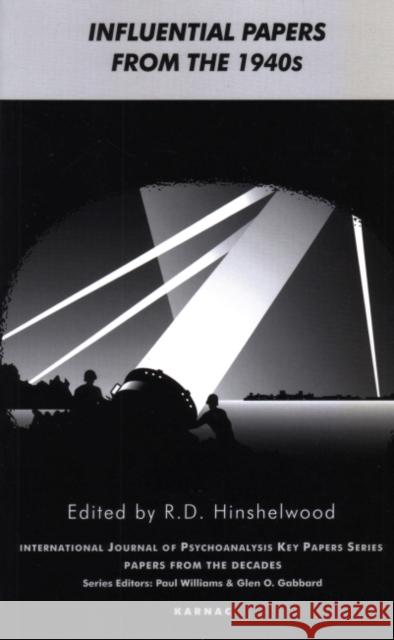Influential Papers from the 1940s » książka
Influential Papers from the 1940s
ISBN-13: 9781855753037 / Angielski / Miękka / 2005 / 364 str.
Influential Papers from the 1940s
ISBN-13: 9781855753037 / Angielski / Miękka / 2005 / 364 str.
(netto: 231,28 VAT: 5%)
Najniższa cena z 30 dni: 241,34
ok. 22 dni roboczych
Dostawa w 2026 r.
Darmowa dostawa!
1940s was a time of great change in the psychoanalytic world. The War sounded a deathblow to continental European psychoanalysis, with only two small societies remaining in Switzerland and Sweden; while Britain and the United States had to adapt to the influx of psychoanalytic refugees. The death of Freud at first brought uncertainty over the future of psychoanalysis but ultimately led to greater creative freedom in exploring new ideas and theories. These years marked the birth of post-Freudian issues. There was a reflective attitude towards psychoanalysis itself, caused by Freud's death and the diaspora of analysts. There were new debates on the relations between psychoanalysis and subjects such as philosophy and biology. There was a good deal of freedom to review metapsychology and ideas such as the development of group therapy, now established, were starting to take root.
A new generation of analysts began to emerge at this time, those who would become highly significant in the development of British psychoanalysis and the object-relations school in later years, including Ronald Fairbairn, Donald Winnicott, John Bowlby and Michael Balint. Winnicott and Bowlby were both essentially empirical and their work in these years were laying the basis for the renowned independent (or middle) group of psychoanalysts in the British Psychoanalytical Society. The 1940s marked an abundance of new ideas and new individuals that would grow to leave their mark on the subsequent decades.











